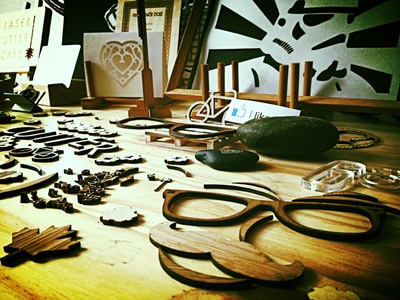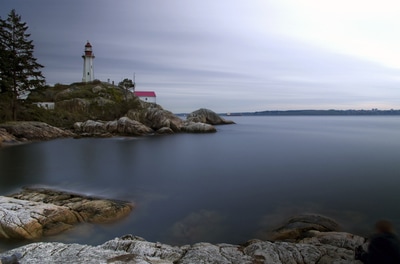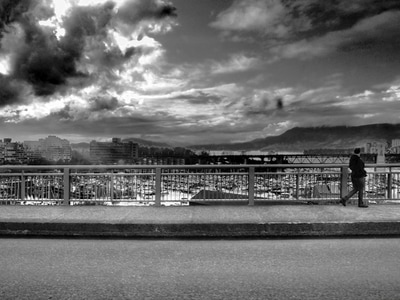|
Image credit: Daria Shevtsova on Pexels.com I'm asking because I'm wondering if this is still too much an insider term, that only those of us with design education or experience will grasp.
When I was preparing a calendar of blog post topics, and reviving my efforts to be more present online and through social media, I made an assumption — that the general public already knew what Designers actually do. But several conversations I've had over the past year have had me justifying the type of design practice I engage in, and what the world of Design has actually evolved to be. During a getting-to-know-you chat with someone who I'd easily identify among my ideal client base — we had an introductory conversation about our respective businesses. We offered to help one another network among our own contacts. We concluded by summarising what we understood about the services offered by the other person. Perhaps it was the way I positioned myself. But it was interesting to hear, at the end of this meeting, how my practice was distilled into something to do with "branding". This is also not a diss against "branding". So, I'm taking this recent encounter as an opportunity to clarify. Design Thinking is a technique applied to the objects and systems created by humans — from our political and legal systems, our healthcare and education, our organizational and business models and financial institutions — to urban planning, engineering, transportation, architecture and community development — to technologies, biomedical research, agriculture, environmental stewardship and space exploration — and of course, to products, culture, media, and entertainment. Yes, corporate identity — commonly referred to as "branding" — is part of this mix. There's a long list and I'm bound to be missing a few items here. But hopefully these examples illustrate my point. You can think of it as a creative endeavour, but anything that has a goal-oriented outcome needs to be designed. Research, design and methodologies are tools to help all involved understand and work with that end in mind. This is where Design Thinking comes in. And User-Centred Design (also called User Experience or UX) is a key principle informing this research, planning and methodology. Some in the community like to call it Human-Centred Design. (I don't know what the shortened version of that term is, but I digress.) User-Centred Design helps us focus on the experience of the end user of a system or product. And those end users can include our target audience or direct consumers, but also staff, volunteers, administrators, boards, investors, other types of stakeholders and the public at large. I don't want to make this post any longer than it already is, so if you are interested in finding out more, you can get in touch, or search online for the many articles that describe UX. Even though Design Thinking as a term has been around at least since the mid-1960s, around 2015, there was an upsurge in writing about the topic, from sources as diverse as management consultants, and ... well, mainly management consultants. So I take it, progressive business leaders understand the purpose of Design Thinking. At this point, four years after the seeming re-popularisation of the term, I am interested to hear what you think. Having considered a few of the areas that benefit from Design Thinking as a tool or technique, how does it affect the type of industry you are in? The work that you perform? The people you help? And can you tell me, if you are not a designer, what does this term, "Design Thinking", ultimately mean to you? For those of you who are life coaches, business mentors or professional facilitators — if I include the terms Design Thinking, or User Experience in my bio, LinkedIn headline or profile, will this seem too jargon-y, or will you understand what these words mean? A lot has taken place this past year. Many of my clients have known me through a variety of roles: administering and volunteering at non-profits, including a media arts festival that is still operating to this day—via the new music community, as well as through the digital arts community—as a sound designer and as a producer. Still others in my circle of friends remember me from high school and university, where I performed professionally as a musician and sound artist, and studied history & art, design & photography.
I am nothing if not versatile ;-) Which is one of the reasons I had mixed feelings when a job I'd held for close to nine years was suddenly eliminated due to budget cuts. All of my colleagues expressed their grief and loss, and surrounded me with support and encouragement. At the time, my son was due to graduate from high school in a few months, and was planning to start his very costly education overseas in the fall (I still tell him that getting a Law degree from the UK is one heck of a way to become a writer). Well my son has been in his new Law program since October, and here I am. All this is to say, that what others view as setbacks, can also be reframed as windows of opportunity. I credit this empowering attitude to an executive producer who mentored me during my early years in broadcasting. (Hi Stewart!) On receiving the news about the soon-to-be-disappearing job, I immediately started to revive my networks of clients and past collaborators. I was grateful to be invited to work again with a well-established client in the social change sphere, to manage and consult on several interesting projects. An emerging documentary filmmaker benefitted from my contacts in the industry and my knowledge of film financing programs, and I created a robust television, digital media, and marketing proposal that will easily be shopped around to broadcasters, distributors and other financiers. And a former colleague came to me to help her design a couple of book covers. A couple of startups are consulting me for advice on how to apply for funding. All work that I'm really proud of. I've learned there are several approaches to working as a freelancer and networking, and it's best to try to keep a balance between making new contacts and performing the work that pays. As far as networking is concerned, I'm trying to keep all channels active. Face-to-face networking is best, we're told. For years I've been a recreational member of Meetup.com, and for the past few months have been joining several industry and business related meetups as well. I'm going to make a point too, of joining my first Likemind Vancouver event this month. If you're reading this and you've had a call or email from me to set up an information interview—well that's also one of my techniques to meet new people, reconnect with former colleagues, and to form stronger networks in the community. Another way to keep active is to join a variety of online and virtual networks. I cannot comment on the success of using Remote.com or Upwork.com to network or find work, but I do know that I have generated some good discussion through Alignable.com, a networking site that encourages us to connect with businesses in our local neighbourhoods, and I've actually been contacted for work through SIMBI.com, which operates both locally and virtually, using not cash, but virtual currency or a direct exchange of services and goods. Of course, LinkedIn is the standard for businesses, and provides a reliable way to keep tabs across most of my cultural and industry networks. For the past few weeks, I've latched onto a couple of interesting podcasts, including FreelanceTransformation.com, and beingfreelance.com, both of which bring a variety of perspectives and tips to listeners, from people who have been there, and are doing it. Each interviewee talks about their technique to identify their ideal client, reach out to new clients, determine a value for the service they offer, and organize their practice. It's an exciting challenge, repositioning. What are some of the useful tools and resources you've encountered, and how have they helped you with your business? EyeEm has selected Katherine Lee's photo (also used for this site's NEWS page) for its Premium Collection. What does that mean? The Premium collection is "an image distribution partnership between EyeEm and selected partners such as Getty Images, Alamy, and Adobe Stock." Although it seems almost everyone has a camera nowadays and a social media presence, well-crafted images are still a vital part of our storytelling nature. We'll continue to post links here as we update our photo galleries. In the meantime, you can also visit us on Flickr.
Edit April 30, 2017: EyeEm has accepted three more images for licensing! |
AuthorA prairie plant, now living on the West Coast of Canada for 30 years. Archives
July 2019
Categories
All
|




 RSS Feed
RSS Feed